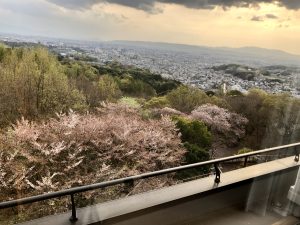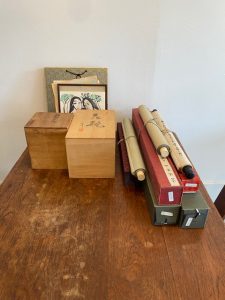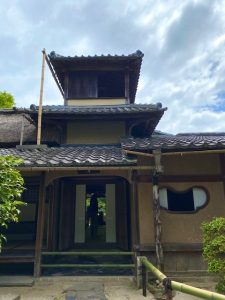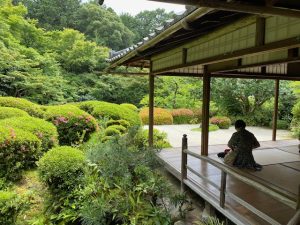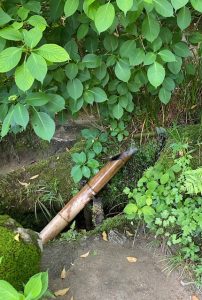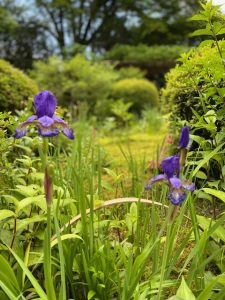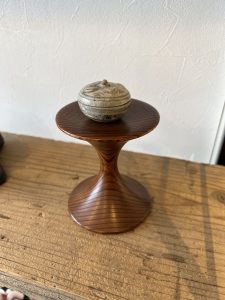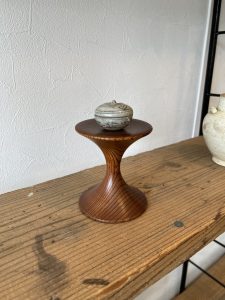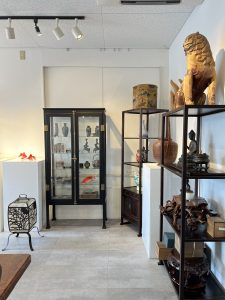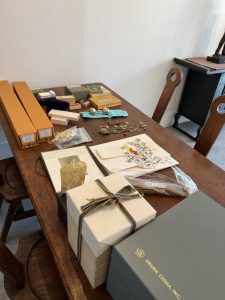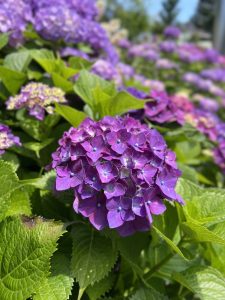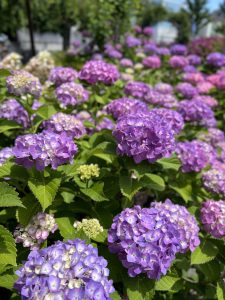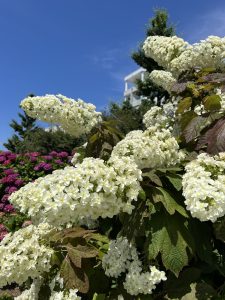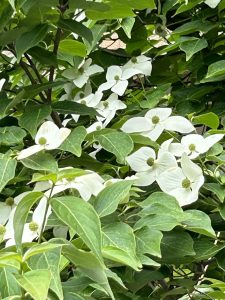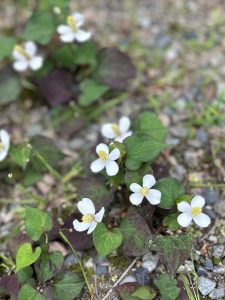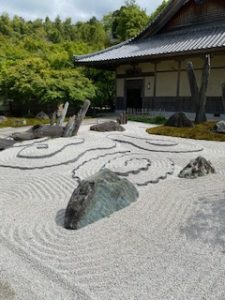春日大社でレア物探し(愛知県名古屋市千種区姫路通 骨董買取 古美術風光舎)
2023.06.11
皆さまこんにちは。スタッフHでございます。
先日に続いて奈良旅行にお付き合いください。
旅行2日目、春日大社に参拝しました。
何度も訪れている場所ですが、年齢と共に感じ方も変わってきているように思います。
鮮やかな朱塗りの社殿で知られる春日大社は、奈良時代に古代から神域とされた御蓋山(みかさやま)の麓に造営されました。全国の春日神社の総本社であり、世界遺産にも登録されています。
本殿近くの御神木の大杉は周囲8.7m、高さ25m、樹齢800年~1000年。どっしりと根を張り、大地からエネルギーを吸い上げているように見えました。
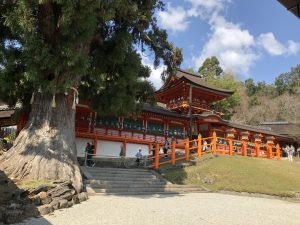

春日大社には約3000基の燈籠があり、そのうち参道に並ぶ石燈籠が約2000基。回廊に吊り下げられた釣燈籠が約1000基あります。釣燈籠は室町時代から現代までに寄進されたものです。徳川綱吉や直江兼続などにより奉納されたものもあります。
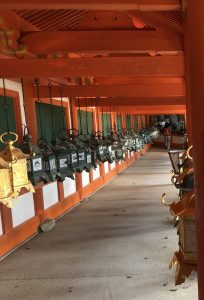
石燈籠は平安時代より貴族や武士、商人などから商売繁盛、家内安全などの願いを込めて寄進され、現在も企業などから寄進されています。
そしてその2000基の石燈籠の中にレアなものがあることをご存じですか?
2000基のほとんどには「春日社」と彫られていますが、15基だけ「春日大明神」と彫られたものがあります。そのレアな燈籠を一晩で3基発見すると長者になれるという言い伝えがあるそうです。
私も初めのうちは興味津々で目を凝らして探していましたが、そのうち荘厳なご本殿に見惚れ、澄み切った空気に包まれるうちに、すっかり宝探し気分は抜けていました。
ところが若宮への参拝に向かう途中、えっ?と二度見した燈籠。目に入ってきたのは他の燈籠に彫られた文字より長い文字…「春日大明神」。
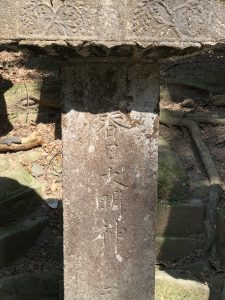
やはり欲を捨てるのは大事なことなのかもしれません。
かつて燈籠には毎晩火が入り、暗闇の中で春日大社一帯がその揺らめく灯で浮かび上がって見えたと言い伝えられています。当時の様子を知ることのできる万燈籠という神事が年に2回、2月と8月に行われています。3000基の燈籠に火を灯し、幻想的が世界が広がります。
万燈神事をいつでも感じてもらうために江戸時代まで神職の詰所であった藤浪之屋が開放され万燈籠が再現されています。

中に入ると足元をすくわれるような、心もとない感覚になります。
いにしえの漆黒の夜、燈籠の灯は今の何倍も明るく人々を導いていたのではないでしょうか。
それでは、またお会いしましょう。
Hello everyone. This is Staff H.
Please continue to accompany me on my trip to Nara as I did the other day.
On the second day of the trip, we visited Kasuga Taisha Shrine.
Although I have visited this place many times, I think my impression of it has changed with age.
Kasuga Taisha, known for its bright vermilion-lacquered shrine pavilions, was built in the Nara period (710-794) at the foot of Mikasa Mountain, which was considered a sacred area since ancient times. It is the head shrine of all Kasuga shrines in Japan and is registered as a World Heritage site.
The sacred tree near the main shrine is a large cedar, 8.7 meters in circumference, 25 meters high, and 800 to 1,000 years old. It is 8.7 meters in circumference, 25 meters in height, and 800 to 1,000 years old.
Kasuga Taisha Shrine has approximately 3,000 stone lanterns, of which about 2,000 line the approach to the shrine. Of these, about 2,000 are stone lanterns lining the approach to the shrine, and about 1,000 are tsuriton (hanging lanterns) hanging in the corridors. Tsuri-toro lanterns were donated from the Muromachi period (1333-1573) to the present day. Some were dedicated by Tsunayoshi Tokugawa and Kanetsugu Naoe.
Since the Heian period (794-1185), stone lanterns have been donated by aristocrats, warriors, and merchants to pray for business prosperity and family safety, and they are still being donated today by corporations.
Did you know that among the 2,000 stone lanterns, there is a rare one?
Most of the 2,000 stone lanterns are engraved with “Kasuga Shrine,” but only 15 are engraved with “Kasuga Daimyojin” (Kasuga Grand Myojin). There is a legend that if you find three of those rare lanterns in one night, you will become a chief.
At first, I was very curious to look for the lanterns, but soon, as I admired the majestic main shrine and was enveloped by the clear air, I was completely out of the treasure-hunting mood.
On my way to the Wakamiya shrine, however, I saw a lantern that made me look twice. I looked twice at the lanterns. What caught my eye were the words “Kasuga no daimyojin,” which were longer than the words carved on the other lanterns.
Perhaps it is important to let go of greed.
It is said that the lanterns used to be lit every night, and in the darkness, the whole area of Kasuga Taisha Shrine would appear to float in the flickering lights of the lanterns. The Mantoro ritual is held twice a year, in February and August, when 3,000 lanterns are lit to create a magical world.
To allow visitors to experience the Manto ritual at any time, the Fujinami-no-ya, which used to be a Shinto priest’s office until the Edo period (1603-1868), has been opened to recreate the Manto Lantern Festival.Once inside, one feels as if one’s feet are being swept off their feet.
In the jet-black night of ancient times, the lights of the lanterns must have guided people many times brighter than today.
I hope to see you again.
*******************
ご実家の整理やお片付けなどをされている方のご相談などが多くございます。
お片付けなどくれぐれもご無理のないようになさってくださいませ。
風光舎では古美術品や骨董品の他にも絵画や宝石、趣味のお品など様々なジャンルのものを買受しております。
お片付けをされていて、こういうものでもいいのかしらと迷われているものでも、どうぞお気軽にご相談下さいませ。
また風光舎は、出張買取も強化しております。ご近所はもちろん、愛知県内、岐阜県、三重県その他の県へも出張いたします。
まずは、お電話お待ちしております。
愛知県名古屋市千種区姫池通
骨董 買取【古美術 風光舎 名古屋店】
TEL052(734)8444
10:00-17:00 OPEN
#出張買取#骨董#古美術#骨董品#絵画#版画#茶道具#刀剣#彫刻



